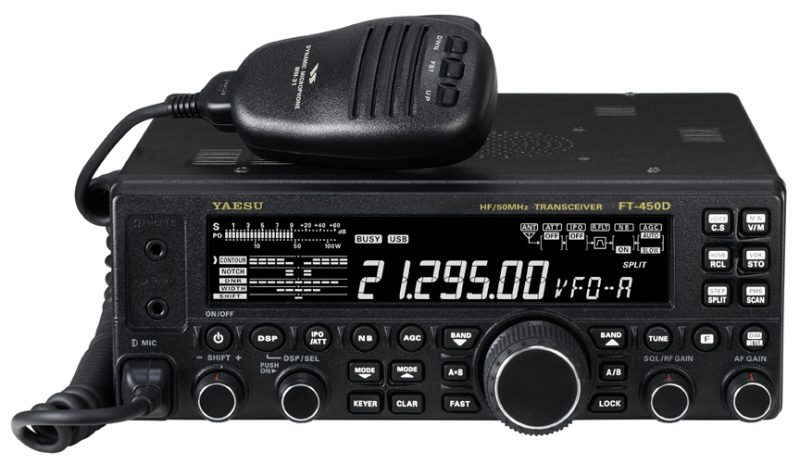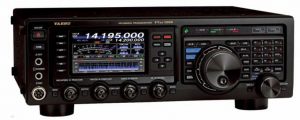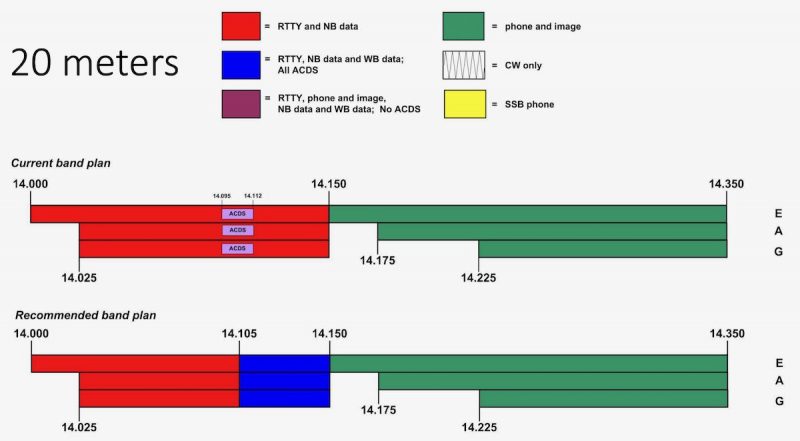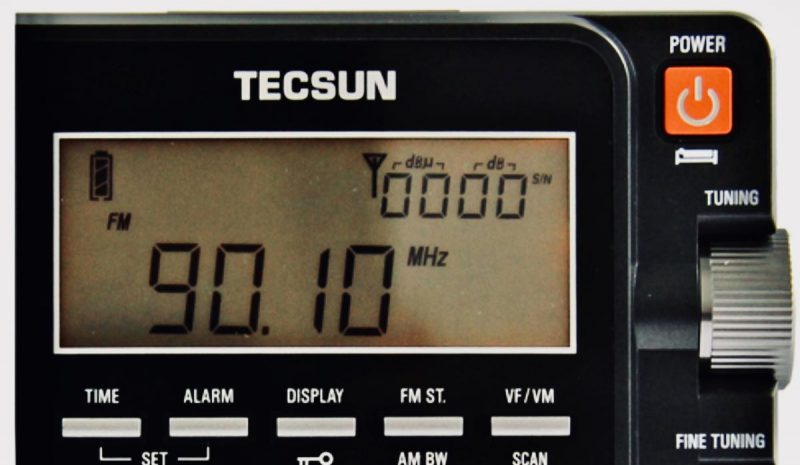

The August 7 test transmission times for From the Isle of Music and Uncle Bill’s Melting Pot
on 9670 kHz, the new frequency on Channel 292, have been changed to
From the Isle of Music: 1600-1700 UTC
Uncle Bill’s Melting Pot 1700-1800 UTC
Reception reports will be appreciated. There will be additional tests throughout August, possibly at different times depending upon the results of the first test.
Category Archives: News
Covid-19: Popular Yaesu and Alinco rigs meet early demise
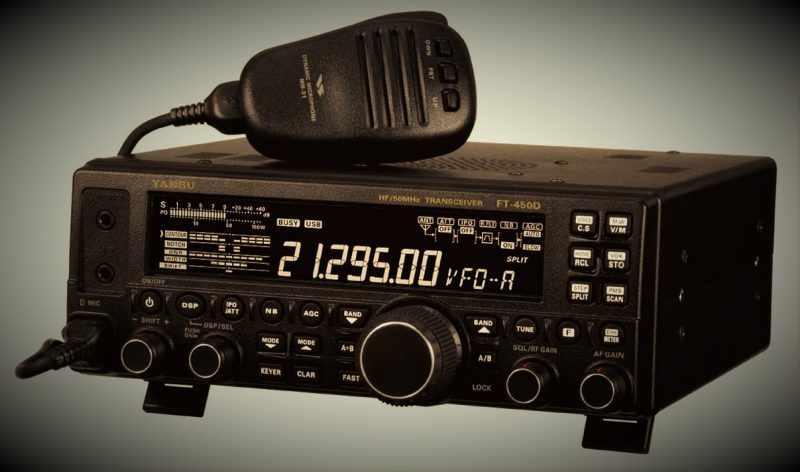 No doubt, the Covid-19 global pandemic has had a mostly negative impact on our daily lives.
No doubt, the Covid-19 global pandemic has had a mostly negative impact on our daily lives.
Surprisingly, I found that the impact on the amateur radio world, at first, was quite minimal. Not only did sheltering at home seem to increase the number of operators on the air, but I found that most of the radio items I needed to purchase were largely available.
Since mid-May, however, radio retailers have struggled to maintain inventory on certain items mainly due to shipping issues from manufacturers (especially when international shipping was involved). Covid-19 issues have also delayed the introduction of a number of transceivers and portable shortwave radios we should have seen in production already.
Most recently, however, I learned from a trusted source that Covid-19 has lead to the early demise of at least two popular radio models.
Alinco DX-R8T: Discontinued
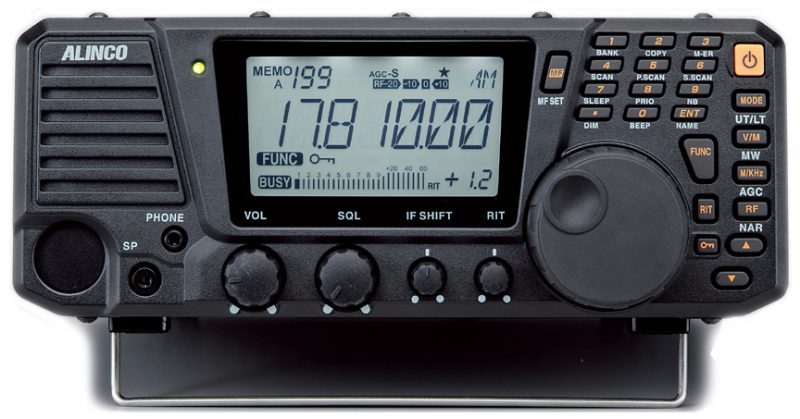 The Alinco DX-R8T has enjoyed a long product life. I recall reviewing this fine tabletop receiver back in 2011. It has been a very popular radio because it’s been one of the only “legacy” tabletop receivers still in production.
The Alinco DX-R8T has enjoyed a long product life. I recall reviewing this fine tabletop receiver back in 2011. It has been a very popular radio because it’s been one of the only “legacy” tabletop receivers still in production.
I recently learned that Alinco will no longer produce the DX-R8T due to “parts issues.” One would have to assume that this will also affect the DX-R8E (EU version) and eventually the DX-SR8T which is the transceiver version of this model.
Retailers may still have some inventory of these models, but once those models have been purchased, there will be no more. I would certainly suggest purchasing the DX-SR8T transceiver as an alternative since the price difference is modest and it’s built on the same receiver as the DX-R8T.
Yaesu FT-450D: Discontinued
Like the Alinco above, Yaesu has announced that they are discontinuing production of the popular Yaesu FT-450D general coverage transceiver due to “parts issues.”
It’s worth noting the venerable Yaesu FT-DX1200 recently met the same fate.
To be clear: parts obsolescence happens in the best of times. Covid-19 has simply accelerated the issue.
If you’ve been considering the purchase of one of these models, you might bite the bullet now if you can find a retailer with inventory.
If I learn of any other radios being discontinued, I’ll publish updates here on the SWLing Post.
Radio Waves: FCC Fines Drone Retailer, High School WSPR Buoy, Flashing Radio Firmware, and “Radio Recliner” Powered by Senior Resident DJs
 Radio Waves: Stories Making Waves in the World of Radio
Radio Waves: Stories Making Waves in the World of Radio
Because I keep my ear to the waves, as well as receive many tips from others who do the same, I find myself privy to radio-related stories that might interest SWLing Post readers. To that end: Welcome to the SWLing Post’s Radio Waves, a collection of links to interesting stories making waves in the world of radio. Enjoy!
Many thanks to SWLing Post contributors Ron, Pete Eaton, Paul Evans, and Jennifer Gulley for the following tips:
FCC Fines HobbyKing Nearly $3 Million for Marketing Unauthorized Drone Transmitters (ARRL News)
The FCC has issued a Forfeiture Order (FO) calling for HobbyKing to pay a fine of $2,861,128 for marketing drone transmitters that do not comply with FCC rules. An FCC Enforcement Bureau investigation stemmed in part from a 2017 ARRL complaint that HobbyKing was selling drone transmitters that operated on amateur and non-amateur frequencies, in some instances marketing them as amateur radio equipment. The fine affirms the monetary penalty sought in a June 2018 FCC Notice of Apparent Liability (NAL). The FCC said its investigation found that dozens of devices marketed by the company transmitted in unauthorized radio frequency bands and, in some cases, operated at excessive power levels. “Such unlawful transmissions could interfere with key government and public safety services, like aviation systems,” the FCC said.“We have fully considered HobbyKing’s response to the NAL, which does not contest any facts and includes only a variety of legal arguments, none of which we find persuasive,” the FCC said in the FO. “We therefore adopt the $2,861,128 forfeiture penalty proposed in the NAL.”[…]
High School Marine Buoy Transmitter Now Active on 20-Meter WSPR (ARRL News)
Phil Karn, KA9Q; Randy Standke, KQ6RS, and members of the Mount Carmel High School Amateur Radio Club (MCHSARC) in San Diego have constructed and deployed an amateur radio marine buoy in the Pacific. The buoy, which transmits WSPR on 14.0956 MHz USB, has already been heard around the continental US, Brazil, Hawaii, Japan, Costa Rica, Australia, and South Africa.
“Over the past year, Randy and I have mentored the MCHSARC in designing and constructing a simple marine buoy that was deployed from the RV Sally Ride [on July 16], about 700 kilometers off the coast of southern California,” Karn said in a post on the AMSAT Bulletin Board. “It is up and transmitting WSPR on 20 meters using the call sign KQ6RS, and is being received all over the US and into Canada and Brazil.” Karn is blogging about the project with updates.
The electronics are the 20-meter WSPR version of the WB8ELK “pico tracker” that has been flown on long-duration balloons. “We removed the solar panels and substituted 21 ordinary alkaline D cells, wired to supply 4.5 V,” Karn explained. “We estimate battery lifetime will be 6 months.”
[…]The first reception report was on July 16 at 12:52:30 UTC from grid square CL89eu, although the current carried the buoy east into CL89fu at 20:32:30 UTC. The buoy (KQ6RS-1) can be tracked on the APRS and WSPRnet sites.[…]
Stop Bad Laws Before They Start (Hackaday)
With everything else going on this summer, you might be forgiven for not keeping abreast of new proposed regulatory frameworks, but if you’re interested in software-defined radio (SDR) or even reflashing your WiFi router, you should. Right now, there’s a proposal to essentially prevent you from flashing your own firmware/software to any product with a radio in it before the European Commission. This obviously matters to Europeans, but because manufacturers often build hardware to the strictest global requirements, it may impact everyone. What counts as radio equipment? Everything from WiFi routers to wearables, SDR dongles to shortwave radios.
The idea is to prevent rogue reconfigurable radios from talking over each other, and prevent consumers from bricking their routers and radios. Before SDR was the norm, and firmware was king, it was easy for regulators to test some hardware and make sure that it’s compliant, but now that anyone can re-flash firmware, how can they be sure that a radio is conformant? Prevent the user from running their own firmware, naturally. It’s pretty hard for Hackaday to get behind that approach.[…]
New Internet Radio Station Helps Seniors Share Their Favorite Music (NPR)
A new internet radio station called Radio Recliner has started during the coronavirus pandemic. It gives residents in senior living facilities a chance to share some of their favorite music.
Click here to check out the Radio Recliner website.
Do you enjoy the SWLing Post?
Please consider supporting us via Patreon or our Coffee Fund!
Your support makes articles like this one possible. Thank you!
New Technician HF Privileges Defined: ARRL board accepts final recommendations of the Band Planning Committee
(Source: ARRL News)
During this session, the [ARRL] Board took the following actions:
Accepted the final recommendations of the Band Planning Committee. Committee chair and ARRL First Vice President Mike Raisbeck, K1TWF, introduced the motion to adopt the plan. An earlier draft of the plan was introduced at the Board’s in-person January meeting. After the January Board meeting, the Committee received and considered hundreds of comments from interested amateurs. The final band plan can be viewed on the ARRL website.
The new plan only applies to the HF band and makes no changes to 160 and 60 meters. A couple other notes from the accepted plan:
- No changes to CW allocations throughout all amateur bands
- RTTY and all other narrowband, non-ACDS modes permitted wherever data
modes are allowed
As you read through the changes, keep in mind that the new plan addresses expanded Technician HF privileges and also re-defines ACDS (Automatically Controlled Digital Stations) allocations among other modifications.
Technicians will be happy to note they’ll have new phone and image privileges on 80 meters (3,900 – 4,000 kHz), 40 meters (7,225 – 7,300), and 15 meters (21,350 – 21,450 kHz).
Click here to download a PDF of the accepted (final) proposed plan.
Silphase R1 videos and information about power and antenna ports
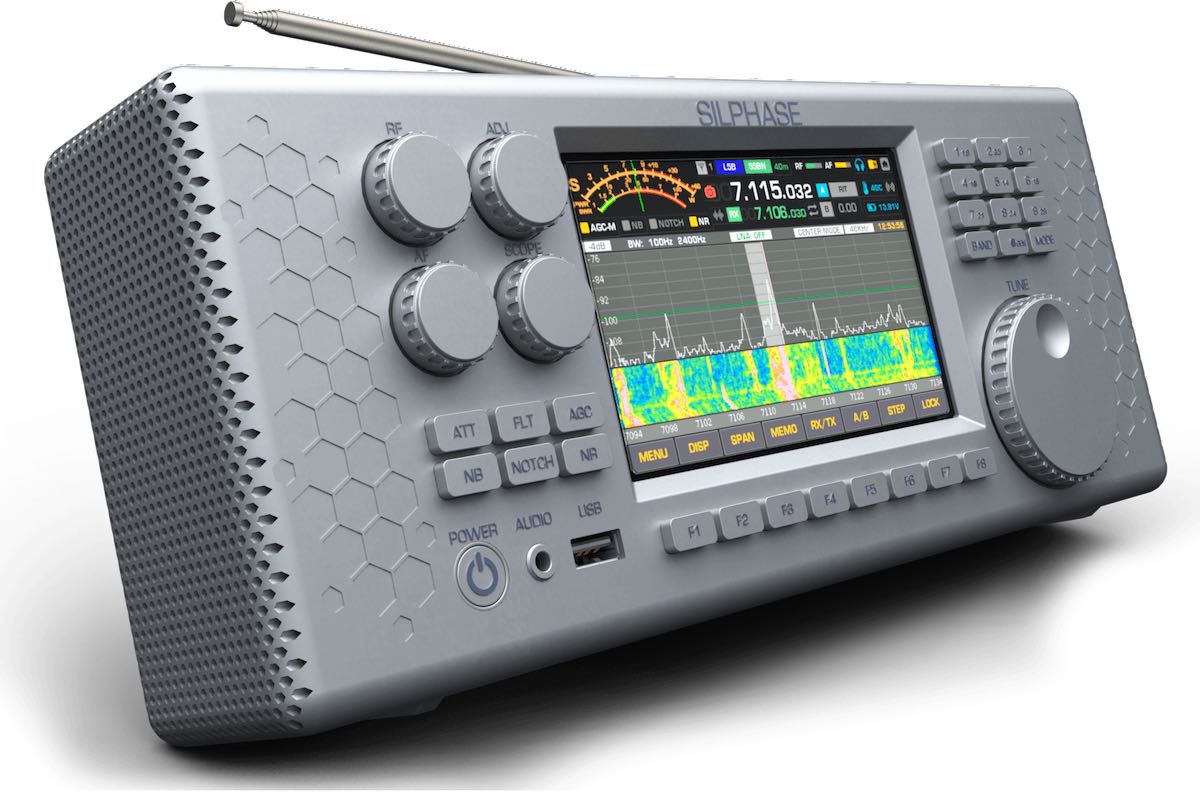 We’re starting to get a little more info about the recently posted Silphase R1 SDR receiver. At this point, the radio isn’t in production and is obviously only in a prototype stage so there are a lot of question marks–including if it’ll ever come to fruition. The pandemic is obviously not an ideal time to launch and produce a new high-end radio. I, for one, certainly hope they do!
We’re starting to get a little more info about the recently posted Silphase R1 SDR receiver. At this point, the radio isn’t in production and is obviously only in a prototype stage so there are a lot of question marks–including if it’ll ever come to fruition. The pandemic is obviously not an ideal time to launch and produce a new high-end radio. I, for one, certainly hope they do!
Many thanks to SWLing Post contributor, Mark Hirst asked Silphase about R1 external antenna support and power options. A Silphase representative replied:
“We are constantly redesigning the rear panel receiver Silphase R1, so we
can say for sure that there are 4 connectors – antenna F-type connector,
12.6 V power/charging, RJ-45 and USB”
And thanks to SWLing Post contributor, Paul, who received the following info from Silphase:
You can watch real videos on our YouTube channel.
Sample videos:
Click here to view all of the videos on the Silphase YouTube channel.
As we learn more about the Siplase R1, we’ll publish it on the Post with the tag: R1.
Converting Tecsun signal meter numbers into five strength units?
Many thanks to SWLing Post contributor, Chris Rolfe (M3OZP), who writes with the following inquiry:
Don’t know if anyone can help.
I have a Tecsun PL-880, and it shows signal strength in db. How can I work out the signal strength as 1 to 5? All my other radio have 1 to 5 signal strength meters which is what I have always been used to.
Many thanks.
Chris Rolfe
M3OZP
Thank you for your question, Chris. The signal meter on the PL-880 and a number of other late-model Tecsuns that use similar DSP chips share the signal display which indicates both the signal strength and signal-to-noise ratio. I believe the dBu number indicates the conducted voltage across the receiver’s internal resistance.
It’s perhaps one of my quirks, but as a listener I actually pay little attention to signal displays on portables unless I’m evaluating signal strength for a report or even using it to locate a local noise. Converting those numbers into an S1 to S5 number is simply something I would do by “guesstimating.” Yeah, not terribly scientific.
There are folks in the SWLing Post community who can do a much better job explaining the readout and how to interpret/convert signal strength across the MW, SW and FM bands.
Post Readers: Please comment if you can shed some light on simplifying signal strength for Chris.
Giuseppe’s reception of the LRA36 test broadcast
Many thanks to SWLing Post contributor, Giuseppe Morlè (IZ0GZW), who shares the following:
Dear Thomas
Here is the link of to video regarding the transmission of LRA 36 in USB mode Saturday July 25, 2020 from 17.00 UTC on 15.476 MHz.
A good result if I think it was almost impossible to listen to it with the sun still high … the place where I listen, in Formia, Italy, is really excellent.
73. Giuseppe Morlè iz0gzw.
Thank you for sharing this, Giuseppe! I’m always impressed with the DX you catch there at your location in Formia! Grazie e ciao!

